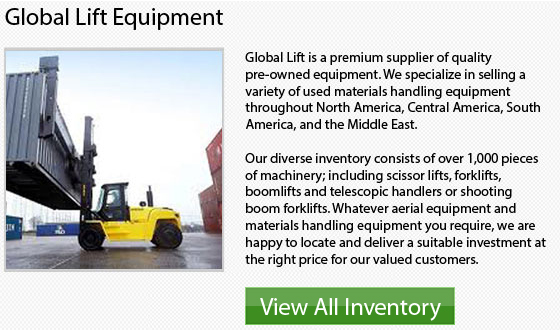
At Hyster, your safety is among our main concerns. This is the reason why we provide a range of optional safety equipment which could be added to your machinery or work place. Following OSHA standards, Hyster manufactures work and head lamps in addition to both visible and audible warning devices.
The only warning device required on the forklift according to OSHA and ASME B56.1 regulations is the horn on the steering wheel. The horn is basic on all types of lift trucks. Though audible or visible warning devices are not required on all types of forklifts, there are several situations where optional warning devices may be suitable. These factors are unique to each work site or work place and each and every condition should be considered individually.
For audible safety devices, which are most frequently back-up alarms or motion alarms, the main factor to consider is the level of noise made by the alarm. First of all, the audible device should be able to be distinguished from other types of noises within the work place and the sound must be extremely loud to be heard in the work location, even when other machinery could be operating. The ability for employees to hear alarms and determine where the noise is coming from could be compromised if workers wear hearing protection devices. If the alarms are too offensive or disruptive to workers, nearby houses, or nearby businesses, alarms might have to be disabled. If noise must be disabled, this must be able to happen readily. Rules must also be followed to make sure that the levels of noise do not go beyond OSHA noise limits.
For visible safety devices, most frequently flashing, strobe or rotating lights, many factors must be considered and thought must be put into whether visible safety devices might be more appropriate compared to audible devices. Operator distraction, workplace lighting and presence of reflective surfaces are all main concerns to take into consideration to make sure that safety devices are effective and do not pose a danger to operators or other workers. Safety light colours must be different from background surfaces and other lights that are within the work place. Safety device placement are really important. Lights must be able to clear any overhead obstacles. Light placement must not cause the lights to reflect or shine into the driver's eyes, but shielding of the lights must not excessively obstruct the light's visibility to pedestrians.
Hyster has a variety of optional lights to meet numerous application needs such as halogen lights and weather-resistant LED that hold up through shock and vibration as well. As for head lamps and work lamps, OSHA has set standards to make working at night or in dark work areas safer. Directional lighting is needed if the lift truck lighting produces less than 2 lumens per square foot. Hyster has a lot of choices which would help increase visibility in low-light situations.